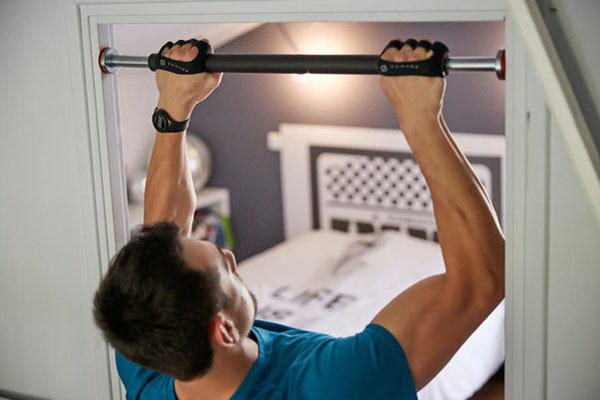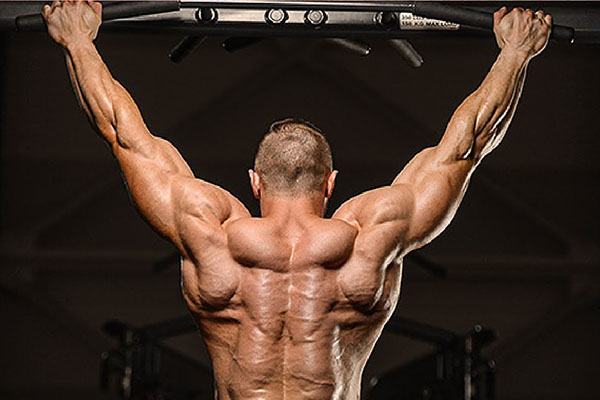In the tapestry of childhood admonitions urging us to gulp down milk and devour greens, one crucial thread often gets tangled or overlooked: exercise. Growing up, we were bombarded with tips on how to add inches to our stature, yet the significance of physical activity in this equation often remained elusive. Amidst the cacophony of advice and old wives’ tales, a nagging question persisted: could something as seemingly straightforward as pull-ups hold the key to unlocking our vertical potential?
In this exploration, we venture into the realm of scientific inquiry to uncover the truth about height augmentation and the potential role that pull-ups might play in this enigmatic quest. But our journey doesn’t stop there. We’ll also navigate through the landscape of growth supplements, probing their efficacy in aiding us on our quest to reach new heights—quite literally.
So, buckle up as we embark on a journey through the complex terrain of height enhancement, armed with curiosity and a thirst for understanding. It’s time to unravel the mysteries and misconceptions surrounding our vertical aspirations
The Science Behind Height Enhancement
The pursuit of increased height has forever captivated individuals, with genetics undeniably holding a significant sway in determining our stature. Nevertheless, it’s not merely a genetic lottery; external factors such as nutrition and physical activity can exert a substantial influence on our height. Research has unveiled a captivating connection between regular physical activity during childhood and adolescence and enhanced height during adulthood, particularly activities like running and jumping. But where do pull-ups fit into this narrative?
Pull-ups, those demanding exercises that primarily target the muscles of the back, arms, and shoulders, may not possess a direct link to height augmentation. However, they have a place within the discourse surrounding height-related matters. Why, one might wonder? While there isn’t conclusive evidence to assert that pull-ups can stretch an individual to new heights, they do possess the potential to enhance one’s overall posture and muscle tone. And occasionally, a well-aligned, toned physique can create the illusion of increased height. So, let us delve into the science behind the possibility of pull-ups promoting height enhancement, even if it’s not as straightforward as it may initially appear.

The Many Benefits of Incorporating Pull-Up Exercises into Your Fitness Routine
Pull-ups, a classic form of strength training, involve gripping a horizontal bar and raising your body until your chin clears the bar. This exercise primarily targets the muscles of the back, shoulders, and arms, making it incredibly effective for building upper-body strength. What sets pull-ups apart is their versatility, allowing you to perform them in various settings with minimal equipment requirements.
In this article, we will delve into the numerous health advantages that come with including pull-ups in your fitness regimen and explore the different variations of this exercise.
- Enhanced Upper Body Musculature: Pull-ups engage a wide range of upper body muscles, including the latissimus dorsi, trapezius, biceps, and forearms. This engagement leads to increased muscle mass, greater strength, and improved endurance in these areas.
- Posture Improvement: By targeting the upper back and shoulder muscles, pull-ups can contribute to better posture. This is especially valuable for counteracting the negative effects of prolonged periods of sitting, such as hunching over a desk.
- Increased Grip Strength: Pull-ups demand a strong grip on the bar, resulting in significant improvements in grip strength. This enhanced grip strength has practical implications for other exercises and everyday activities that involve gripping or carrying heavy objects.
Incorporating pull-ups into your fitness routine empowers you to harness these benefits, fostering overall enhancement of upper-body strength and fitness levels.
Exploring the Variety of Pull-Up Exercises
- Wide-Grip Pull-Ups: These are performed with a grip wider than shoulder-width and primarily target the latissimus dorsi and upper back muscles.
- Close-Grip Pull-Ups: Executed with a grip narrower than shoulder-width, these focus primarily on the biceps and forearm muscles.
- Chin-Ups: Carried out with a shoulder-width or narrower grip, palms facing towards you, chin-ups primarily target the biceps and upper back muscles.
- Commando Pull-Ups: Accomplished with a grip wider than shoulder-width, with one hand facing towards you and the other away, commando pull-ups effectively target both the biceps and upper back muscles.
- Archer Pull-Ups: Conducted with a wide grip, involving one arm primarily in the pulling motion while the other assists, archer pull-ups target the upper back and biceps.
- One-Arm Pull-Ups: Executed using only one arm to lift your body, this challenging exercise engages the latissimus dorsi, biceps, and forearm muscles.
Incorporating these diverse pull-up variations into your fitness routine adds excitement and variety while targeting specific muscle groups. So, whether you’re aiming for a stronger upper body, better posture, or improved grip strength, pull-ups have you covered with their multitude of advantages and variations.
A Comprehensive Guide to Mastering Pull-Ups for Beginners
Embarking on the journey of pull-ups as a beginner requires a thoughtful approach that combines building strength and honing technique progressively. In this guide, we’ll delve into strategies tailored for newcomers who aspire to excel in the art of pull-ups.
Begin with Assisted Pull-Ups
For those new to pull-ups, starting with assisted pull-ups is a wise choice. These exercises provide a solid foundation for developing both strength and technique before attempting unassisted pull-ups. Begin by utilizing a resistance band or a specialized apparatus designed to provide support as you lift yourself towards the bar. As your strength improves, gradually reduce the level of assistance until you can perform a full, unassisted pull-up.
Embrace Negative Pull-Ups
Negative pull-ups involve starting from the top position of a pull-up and deliberately lowering yourself down. This practice is invaluable for building the necessary strength to complete a full pull-up. To perform a negative pull-up, use a box or bench to reach the highest position, then slowly lower yourself to the lowest point. Repeat this motion for several repetitions.
Master the Correct Technique
Executing pull-ups with proper technique is essential for safety and effectiveness. Begin by gripping the bar at shoulder-width, ensuring your arms are fully extended and your shoulders are relaxed. As you pull yourself upward, keep your elbows close to your body and lift your chest. Pause briefly at the top of the pull-up before lowering yourself down slowly.
Gradually Increase Reps and Sets
As your strength and technique improve, gradually increase the number of pull-ups you perform in each set and the total number of sets. Aim to achieve 3-4 sets of 8-10 pull-ups, with a rest period of 1-2 minutes between sets.
Explore Variations of Pull-Ups
Adding variety to your pull-up routine by incorporating different variations can help target various muscle groups and inject versatility into your workout regimen. Experiment with variations such as wide-grip pull-ups, chin-ups, commando pull-ups, and archer pull-ups.
By following these strategies and dedicating yourself to consistent practice, you’ll be well on your way to mastering the challenging but rewarding exercise of pull-ups. Remember that progress takes time and patience, so stay committed to your journey, and the results will come.

The Importance of Nutrition in Conjunction with Pull-Ups for Maximizing Height Potential
While engaging in pull-ups can play a significant role in enhancing one’s height, it’s crucial to recognize the equal importance of maintaining a proper nutritional regimen for optimal growth and development. Achieving the desired height potential requires a holistic approach, and this includes ensuring your body receives all the essential vitamins and minerals it needs through a well-balanced diet.
Unfortunately, many individuals do not acquire the full spectrum of necessary nutrients solely from their dietary intake. This is where growth supplements come into play as valuable allies. These supplements are meticulously designed to provide the body with indispensable vitamins and minerals, thus fostering healthy growth and development.
Unlocking Height Potential with Growth Supplements
For individuals aiming to unlock their maximum height potential, incorporating growth supplements into their daily routine can prove to be a prudent decision. These supplements typically contain a carefully curated blend of essential elements such as calcium, vitamin D, and zinc, all of which contribute significantly to bone growth and development.
However, it’s essential to stress that the use of growth supplements should be approached with caution and only under the guidance of a healthcare professional. Excessive intake of specific nutrients can lead to adverse effects, and supplements should never replace a well-rounded, nutritious diet.
In summary,
While pull-ups may not directly impact height, they are pivotal for enhancing posture and muscle definition, which can create the appearance of increased height. Height is primarily determined by genetics, although factors such as nutrition and overall health can influence it.
To support healthy growth, maintaining a well-rounded diet with adequate calcium, vitamin D, and protein is crucial. Consulting a healthcare professional or nutritionist can offer personalized dietary recommendations tailored to promoting growth.
Coupled with proper nutrition, regular physical activity, including pull-ups, contributes to overall fitness and well-being. However, the emphasis should be on cultivating a healthy lifestyle rather than solely focusing on height enhancement.
If concerns about height persist, seeking guidance from a healthcare expert is recommended. They can provide insights, evaluate potential underlying issues, and discuss options such as growth supplements if appropriate. Individual outcomes may vary, highlighting the importance of professional advice in addressing such concerns
Hi there! My name is Erika Gina, and I am the author of Choose Supplement, a website dedicated to helping people achieve their height goals naturally and effectively. With over 10 years of experience as a height increase expert, I have helped countless individuals increase their height through diet, exercise, and lifestyle changes.
My passion for this field stems from my own struggles with being short, and I am committed to sharing my knowledge and experience to help others overcome similar challenges. On my website, you will find a wealth of information and resources, including tips, exercises, and product reviews, all designed to help you grow taller and improve your confidence and overall well-being. I am excited to be a part of your height journey and look forward to supporting you every step of the way.
Name: Erika Gina
Address: 2949 Virtual Way, Vancouver, BC V5M 4X3, Canada
Email: [email protected]
